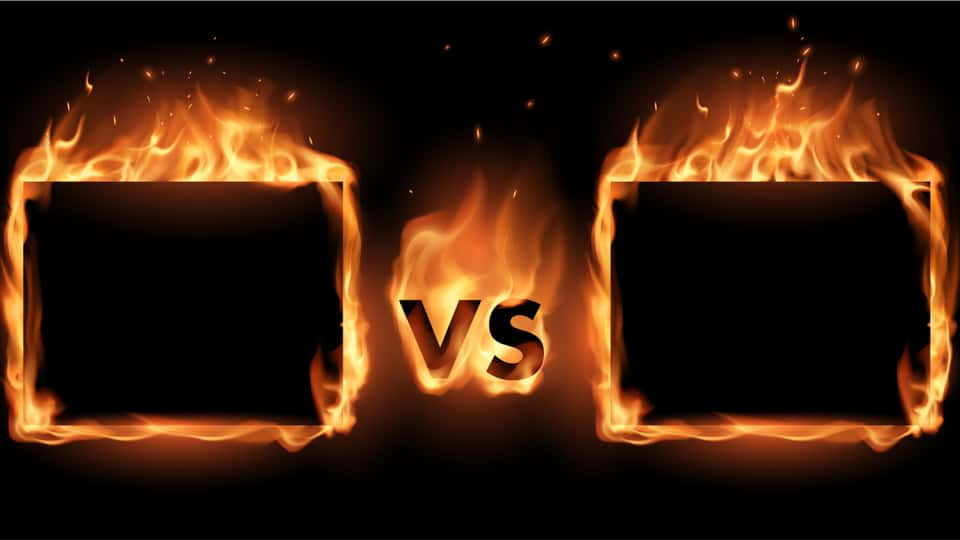Amid the ever-changing and dynamic nature of threats in today’s world, the defense industry is most likely to flourish. Therefore, in this piece, I have compared the fundamentals of two leading defense companies, The Boeing Company (BA - Get Rating) and Textron Inc. (TXT - Get Rating), to determine which one could be the better pick for your portfolio.
The defense industry gained the spotlight amid the Israel-Hamas conflict. During periods of war, defense companies often experience heightened profitability, leading to an upward trend in aerospace and defense stocks amid geopolitical turmoil.
The iShares U.S. Aerospace & Defense ETF (ITA), which monitors prominent defense companies, demonstrated a substantial surge following the initial attacks on Israel. This surge is indicative of investor’s interest in aerospace and defense stocks, as reflected in the ETF’s impressive year-to-date returns of 12.6%.
Considering the ongoing conflict and increasing concerns about nuclear threats, numerous governments worldwide are further increasing their defense spending allocations. Last year, global military expenditures hit an all-time high of $2.20 trillion, with the United States contributing significantly at $877 billion, representing almost 40% of the total spending.
In addition, the United States Congress authorized an enormous defense budget of $886 billion for 2024 to “enhance US deterrence and defense posture in the Indo-Pacific region” and counter the growing influence of China in that area.
Given the industry tailwind, both BA and TXT should benefit. In terms of price performance, BA’s shares have gained 23.5% over the past six months to close the last trading session at $262.02. On the other hand, TXT’s shares surged 20.3% during the same period to close the last trading session at $80.07.
However, to find out which Air/Defense Services stock is the better pick, let us dig deeper into the fundamentals of the featured stocks.
Recent Developments
On November 30, BA disclosed Canada’s official agreement to purchase up to 16 of its P-8A Poseidon aircraft through the Foreign Military Sales Letter of Offer and Acceptance.
This acquisition is part of the Canadian Multi-Mission Aircraft (CMMA) project, making Canada the fifth NATO nation and the latest member of the FIVE EYES intelligence alliance to choose BA’s P-8 as its multi-mission aircraft. The initial aircraft delivery is anticipated in 2026. By harnessing the strength of P-8, Canada seeks to enhance its defense capabilities and readiness.
On October 25, Pipistrel, a TXT company, announced that the Pipistrel Velis Electro, the world’s first type-certified electric aircraft, has been chosen by AFWERX and Modern Technology Solutions, Inc. (MTSI) for lease in the United States Air Force’s Agility Prime program.
This initiative aims to explore operational and training applications of electric Vertical Takeoff and Landing (eVTOL) aircraft, marking a significant step in the U.S. Air Force’s commitment to incorporating zero-emission aircraft into various functions, including training and operations.
Recent Financial Results
BA’s total revenues for the fiscal third quarter (ended September 30, 2023) increased 13.5% year-over-year to $18.10 billion. However, during the same period, the company’s net loss amounted to $1.64 billion, while its loss per share came in at $2.70. In addition, its cash and cash equivalents stood at $6.81 billion, down 53.4% compared to $14.61 billion as of December 31, 2022.
On the contrary, for the fiscal third quarter, which ended on September 30, 2023, TXT’s total revenues improved 8.6% year-over-year to $3.34 billion. Moreover, the company’s net income and EPS came in at $269 million and $1.35, representing increases of 19.6% and 27.4% from the prior-year quarter, respectively.
Past and Expected Financial Performance
BA’s total assets have declined at a CAGR of 5.9% over the past three years. Street expects BA’s revenue for the fiscal fourth quarter (ending December 2023) to increase 4.4% year-over-year to $20.85 billion. However, its EPS for the current quarter is expected to come in at a negative $0.92.
Conversely, TXT’s total assets have improved at a CAGR of 1.3% over the past three years. Analysts predict TXT’s revenue and EPS for the fourth quarter (ending December 2023) to increase 9.2% and 43.5% year-over-year to $3.97 billion and $1.54, respectively.
Profitability
TXT’s trailing-12-month net income margin of 7.07% compares to BA’s negative 3.74%. Additionally, TXT’s trailing-12-month EBIT margin of 8.79% is higher than BA’s 1.31%. Furthermore, TXT’s trailing-12-month asset turnover ratio of 0.83x is higher than BA’s 0.56x.
Thus, TXT is more profitable.
Valuation
In terms of the forward EV/EBITDA ratio, BA’s 177.80x is significantly higher than TXT’s 10.70x. Also, BA’s forward EV/Sales multiple of 2.56 is 93.9% higher than TXT’s 1.32. Furthermore, BA’s forward Price/Cash Flow ratio of 29.34x is 66.8% higher than TXT’s 17.58x.
Thus, TXT is more affordable.
POWR Ratings
BA has an overall rating of C, which equates to Neutral in our proprietary POWR Ratings system. Conversely, TXT has an overall rating of B, translating to a Buy. The POWR Ratings are calculated considering 118 different factors, with each factor weighted to an optimal degree.
Our proprietary rating system also evaluates each stock based on eight distinct categories. BA has a C grade for Growth, justified by its mixed growth in its last reported financial results. On the other hand, TXT’s B grade for Growth is consistent with the robust result in its last reported quarter.
Furthermore, BA’s C grade for Quality is consistent with its mixed profitability metrics. BA’s trailing-12-month cash per share of $11.27 is 435.9% higher than the industry average of $2.10. Whereas, the stock’s trailing-12-month gross profit margin of 11.44% is 62.2% lower than the 30.28% industry average.
In contrast, TXT’s B grade for Quality is justified by its higher-than-industry profitability. TXT’s trailing-12-month cash per share of $8.52 is 304.2% higher than the industry average of $2.10. Also, the stock’s trailing-12-month net income margin of 7.07% is 16.1% higher than the 6.09% industry average.
Among the 71 stocks in the Air/Defense Services industry, BA is ranked #48, while TXT is ranked #7.
Beyond what we’ve stated above, we have also rated both stocks for Value, Momentum, Stability, and Sentiment. Click here to view BA’s ratings. Get all TXT ratings here.
The Winner
While both BA and TXT should benefit from the promising industry landscape, TXT’s superior financials, higher profitability, lower valuation, and upbeat analyst sentiment could make it a better investment candidate for your portfolio over BA.
Our research shows that the odds of success increase when one invests in stocks with an overall rating of Strong Buy. View all the top-rated stocks in the Air/Defense Services industry here.
What To Do Next?
43 year investment veteran, Steve Reitmeister, has just released his 2024 market outlook along with trading plan and top 11 picks for the year ahead.
Want More Great Investing Ideas?
BA shares were trading at $260.95 per share on Friday afternoon, down $1.07 (-0.41%). Year-to-date, BA has gained 36.99%, versus a 25.86% rise in the benchmark S&P 500 index during the same period.
About the Author: Anushka Mukherjee

Anushka's ultimate aim is to equip investors with essential knowledge that empowers them to make well-informed investment choices and attain sustained financial prosperity in the long run. More...
More Resources for the Stocks in this Article
| Ticker | POWR Rating | Industry Rank | Rank in Industry |
| BA | Get Rating | Get Rating | Get Rating |
| TXT | Get Rating | Get Rating | Get Rating |






